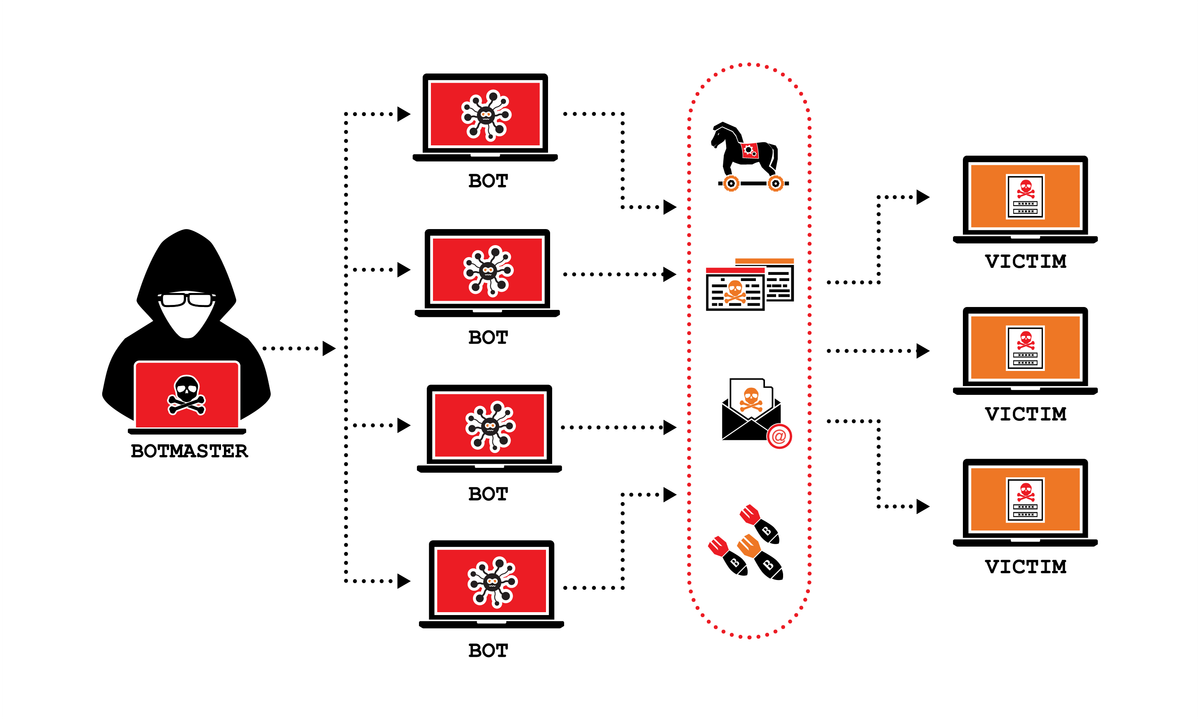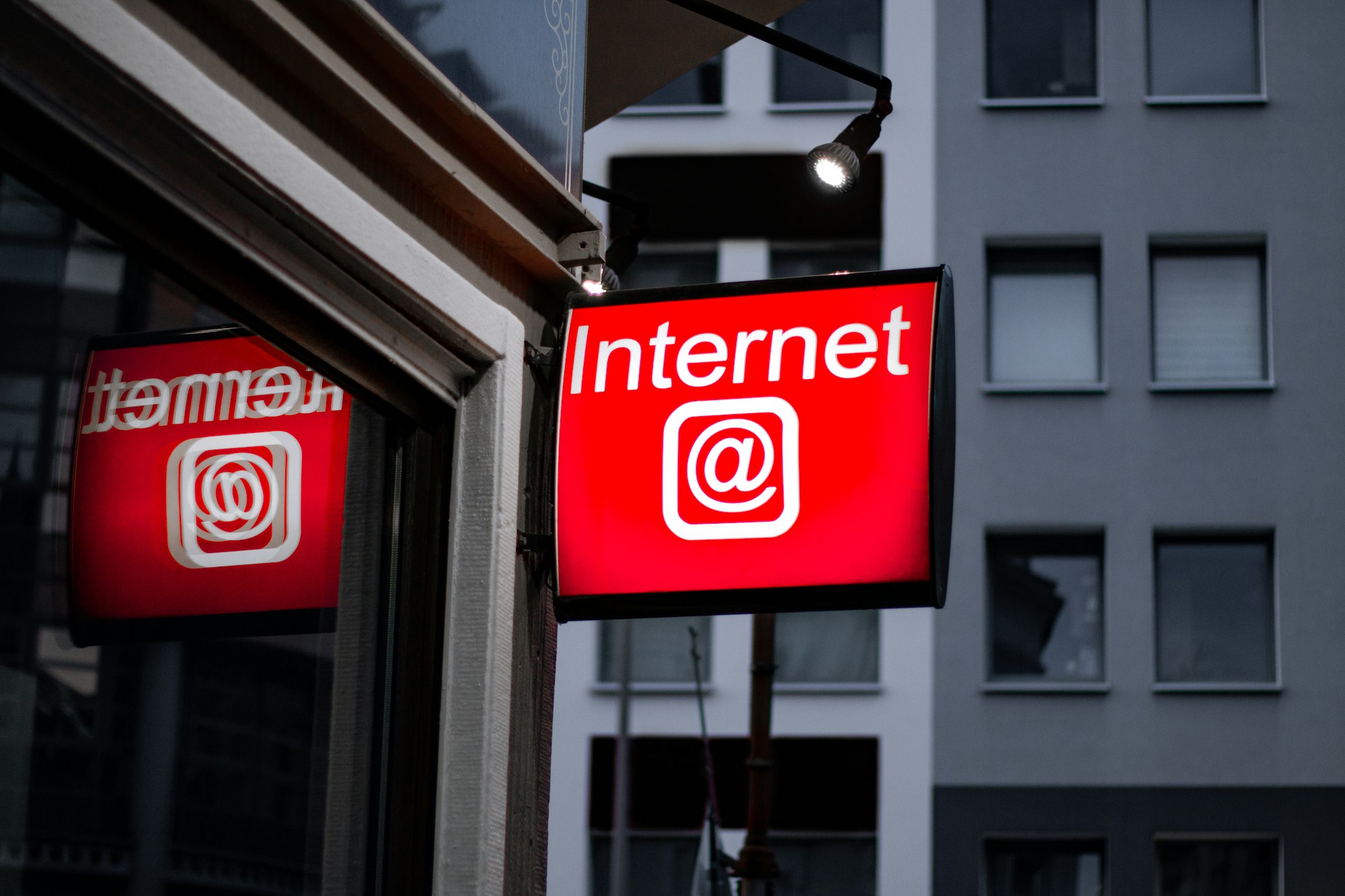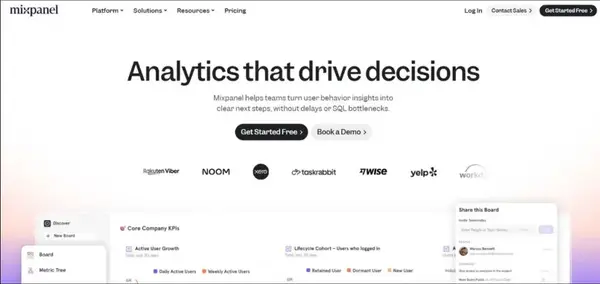The Evolution of DDoS Attacks: From Mirai to Hyper-Volumetric Threats

Introduction
The digital landscape has witnessed an unprecedented escalation in Distributed Denial of Service (DDoS) attacks, with attackers continuously pushing the boundaries of what's possible. From the pioneering IoT-driven Mirai botnet of 2016 to the record-breaking 7.3 Tbps attacks of 2025, the threat landscape has evolved dramatically. This comprehensive analysis examines the most significant DDoS attacks in history, their impact on global infrastructure, and the ongoing battle between cybercriminals and defense providers like Cloudflare and Akamai.

The Current State: Record-Breaking Attacks in 2025
Hyper-Volumetric DDoS Reaches 7.3 Tbps
In the second quarter of 2025, the cybersecurity landscape witnessed a milestone that many hoped would never be reached. Cloudflare reported mitigating a staggering DDoS attack that peaked at 7.3 terabits per second (Tbps) and 4.8 billion packets per second (Bpps) within a span of just 45 seconds. To put this in perspective, this attack delivered 37.4 terabytes of data in 45 seconds—equivalent to streaming 10,000 HD movies simultaneously to a single victim IP address.
The scale of attacks in 2025 has been unprecedented. In just the first quarter alone, Cloudflare blocked 20.5 million DDoS attacks, representing 96% of all attacks they mitigated in the entire year of 2024. By the second quarter, they had blocked over 6,500 hyper-volumetric DDoS attacks, averaging 71 per day.
The Sophistication Evolution
What makes these modern attacks particularly dangerous is not just their size but their sophistication. Attackers are no longer relying solely on brute force; they're combining large-scale floods with smaller, targeted probes to find vulnerabilities and slip past defenses designed to block only obvious attacks. This multi-vector approach represents a significant evolution in attack methodology.
The emergence of the DemonBot variant has added another layer of complexity. This botnet specifically targets Linux-based systems and unsecured IoT devices, using open ports and weak credentials to build massive botnets capable of generating significant volumetric traffic against gaming, hosting, and enterprise services.

The Mirai Legacy: The Attack That Changed Everything
The Birth of IoT-Driven DDoS
The Mirai botnet, first identified in 2016, fundamentally changed the DDoS landscape by demonstrating the devastating potential of compromised IoT devices. Unlike previous attacks that relied on infected computers, Mirai targeted smart devices running on ARC processors—home routers, air-quality monitors, personal surveillance cameras, and other connected devices that users rarely secured properly.
The Krebs on Security Attack
The first major demonstration of Mirai's power came on September 20, 2016, when cybersecurity journalist Brian Krebs' website (krebsonsecurity.com) was targeted by a massive DDoS attack exceeding 620 Gbps. This attack was unprecedented at the time, representing one of the largest on record and serving as a wake-up call to the cybersecurity community about the vulnerability of IoT devices.
The Dyn DNS Attack: Internet Infrastructure Under Siege
The most significant and widely felt Mirai attack occurred on October 21, 2016, when attackers targeted Dyn, a major DNS service provider. The attack, which peaked at 1.2 Tbps, had far-reaching consequences that demonstrated the fragility of internet infrastructure.
Starting at approximately 7:00 AM ET, the attack was directed against three Dyn datacenters in the northeastern United States. The targeting of these DNS servers had localized impacts initially, but the effects quickly spread globally. Major websites and services became inaccessible, including:
- Amazon
- Netflix
- GitHub
- The New York Times
- PayPal
- Spotify
The attack effectively shut down significant portions of the internet for users across North America and Europe, lasting for several hours and demonstrating how a single point of failure in DNS infrastructure could have cascading effects across the entire internet ecosystem.
The Technical Mechanics
The Mirai botnet's success lay in its simplicity and the widespread vulnerability of IoT devices. The malware worked by:
- Scanning for vulnerable devices: Continuously scanning the internet for IoT devices with open Telnet ports
- Brute-force attacks: Using a database of common default usernames and passwords
- Device compromise: Installing the Mirai malware on successfully accessed devices
- Botnet expansion: Using infected devices to scan for and infect additional devices
- Command and control: Coordinating attacks through a centralized command structure
The botnet was powered by tens of millions of compromised devices, creating an unprecedented distributed attack infrastructure that was difficult to shut down due to its decentralized nature.
Major DDoS Attacks and Provider Responses
Cloudflare's Battle Against Volumetric Attacks
Cloudflare has been at the forefront of defending against increasingly sophisticated DDoS attacks. Their mitigation efforts have revealed several key trends:
2022-2023 Escalation: In June 2022, Cloudflare detected and halted a massive attack that topped 26 million requests per second. This was particularly significant as it approached the average traffic levels that Cloudflare typically handles across its entire network.
2023 Record Breakers: The company mitigated attacks that peaked at 201 million RPS—three times higher than the previous largest attack on record (71 million RPS recorded in February 2023). During Q3 2023, they also handled attacks reaching 2.6 Tbps.
2024 Intensity: Cloudflare mitigated 21.3 million DDoS attacks in 2024, representing a 53% increase compared to 2023. The year ended with a record-breaking 5.6 Tbps attack.
Akamai's European Defense
Akamai has documented several significant attacks, particularly in Europe:
2022 European Record: On July 21, 2022, Akamai detected and mitigated the largest DDoS attack ever launched against a European customer, with globally distributed attack traffic peaking at 853.7 Gbps and 659.6 Mpps over 14 hours.
2023 Sustained Assault: Akamai successfully defended a European customer from a record-breaking DDoS assault that peaked at 704.8 Mpps. Notably, 8 of the 10 largest DDoS attacks mitigated by Akamai took place in just 18 months leading up to 2024.
Financial Services Under Fire: In 2024, Akamai mitigated what they characterized as the sixth-largest DDoS peak traffic ever, targeting a major financial services company with sophisticated, high-volume attacks.
Google's Cloud Defense
Google has also faced significant attacks against its cloud customers. In 2023, Google reported defending against HTTPS DDoS attacks that peaked at 46 million RPS, demonstrating that even the largest cloud providers are not immune to these sophisticated attacks.
The IoT Botnet Evolution
Beyond Mirai: New Threats Emerge
While Mirai was the first major IoT botnet to capture global attention, it was far from the last. The success of the Mirai attack created a blueprint that other cybercriminals have continued to follow and improve upon.
DemonBot: This recent variant specifically targets Linux-based systems and unsecured IoT devices, using open ports and weak credentials to build botnets capable of UDP, TCP, and application-layer floods.
911 S5 Botnet: Considered the largest known botnet before its dismantlement in 2024, the 911 S5 botnet had approximately 19 million active bots operating in 190 countries. It spread through infected VPN applications, demonstrating how attackers continue to find new vectors for compromise.
Ongoing IoT Campaigns: Since late 2024, security researchers have continuously monitored large-scale DDoS attacks orchestrated by IoT botnets exploiting vulnerable wireless routers and IP cameras, showing that the threat landscape continues to evolve.
The Persistent Vulnerability Problem
The continued success of IoT-based attacks highlights persistent security issues:
- Default Credentials: Many IoT devices continue to ship with default usernames and passwords
- Poor Update Mechanisms: Limited ability to patch and update IoT devices
- Lack of Security Awareness: Users often don't understand the security implications of connected devices
- Insufficient Manufacturer Security: Many manufacturers prioritize functionality and cost over security
Attack Vectors and Methodologies
Layer 3/4 vs. Application Layer Attacks
Modern DDoS attacks typically fall into two main categories:
Layer 3/4 Attacks: These attacks target the network and transport layers, typically using:
- UDP floods
- TCP SYN floods
- DNS amplification attacks
- ICMP floods
Application Layer (Layer 7) Attacks: These target specific applications and services:
- HTTP/HTTPS floods
- Application-specific protocol attacks
- Slowloris attacks
- SQL query floods
The Amplification Factor
Many modern attacks use amplification techniques to maximize their impact:
DNS Amplification: Attackers send small DNS queries to open DNS resolvers, spoofing the victim's IP address. The DNS responses are much larger than the queries, amplifying the attack traffic.
NTP Amplification: Similar to DNS amplification, but using Network Time Protocol servers.
Memcached Amplification: Exploiting misconfigured Memcached servers to amplify attack traffic by factors of up to 50,000.
The Economics of DDoS Attacks
Ransom DDoS on the Rise
One concerning trend is the 68% increase in ransom DDoS attacks, where attackers either threaten organizations with DDoS attacks or launch attacks and demand payment to stop them. This represents a shift from attacks motivated by ideology or disruption to those driven by financial gain.
The Cost of Defense vs. Attack
The economics of DDoS attacks heavily favor attackers:
Low Cost of Attack: Attackers can rent botnet services for relatively small amounts, making it economically viable to launch large-scale attacks.
High Cost of Defense: Organizations must invest in expensive mitigation solutions, monitoring systems, and incident response capabilities.
Opportunity Cost: Even brief outages can result in significant lost revenue, especially for e-commerce and online service providers.
Geographic and Sectoral Targeting
Most Attacked Industries
Based on recent data, the most targeted sectors include:
- Telecommunications: Service providers and carriers face the highest volume of attacks
- Internet and IT Services: Core infrastructure providers are prime targets
- Gaming and Gambling: These industries face sustained attacks due to their competitive nature
- Financial Services: Banks and financial institutions are targeted for both disruption and extortion
- Software and Computer Services: These sectors saw attack volumes double in recent years
Global Attack Patterns
Most Attacked Locations (by billing country):
- China
- Brazil
- Germany
- India
- South Korea
- Turkey
- Hong Kong
- Vietnam
- Russia
- Azerbaijan
Top Attack Sources:
- Indonesia
- Singapore
- Hong Kong
- Argentina
- Ukraine

The Underground Economy: DDoS-as-a-Service and Cybercriminal Organizations
The Rise of DDoS-as-a-Service (DDoSaaS)
The cybercriminal landscape has undergone a fundamental transformation in recent years, evolving from individual hackers to sophisticated criminal enterprises offering DDoS attacks as a commercial service. This shift has democratized cyberattacks, making powerful DDoS capabilities accessible to anyone with basic technical knowledge and a modest budget.
Booter and Stresser Services: The backbone of the DDoS-as-a-Service economy consists of "booter" and "stresser" services—platforms that ostensibly offer legitimate network stress testing but are primarily used for malicious attacks. These services have become increasingly sophisticated, offering user-friendly interfaces, customer support, and subscription-based pricing models that mirror legitimate software-as-a-service platforms.
Market Scale and Accessibility: The ease of access to these services has fundamentally altered the threat landscape. Law enforcement agencies have documented hundreds of active booter services, with some platforms claiming tens of thousands of registered users. The low barriers to entry mean that even novice cybercriminals can launch devastating attacks against major infrastructure.
Pricing Models and Economic Structure
The economics of DDoS-as-a-Service reveal a surprisingly standardized market with competitive pricing structures:
Subscription Tiers: Most services offer tiered pricing similar to legitimate cloud services:
- Basic plans: $10-30 per month for limited attack duration and bandwidth
- Premium plans: $100-300 per month for higher-powered attacks and longer durations
- Enterprise plans: $500+ per month for maximum attack capabilities and priority support
Pay-Per-Attack Models: Some services offer one-time attack purchases ranging from $5 for short-duration attacks to $50+ for sustained, high-volume assaults.
Cryptocurrency Integration: The vast majority of these services accept cryptocurrency payments, particularly Bitcoin and Monero, to maintain anonymity and avoid traditional financial system oversight.
Integration with Ransomware Operations
The convergence of DDoS attacks with ransomware operations represents one of the most concerning developments in cybercrime. Modern ransomware gangs have adopted DDoS attacks as both a precursor to and amplifier of their primary extortion schemes.
Multi-Vector Extortion: Ransomware groups now commonly employ what security researchers term "triple extortion" tactics:
- Data Encryption: Traditional ransomware deployment
- Data Exfiltration: Threatening to release stolen data
- DDoS Attacks: Launching sustained attacks to pressure victims into paying
Ransom DDoS Evolution: The 68% increase in ransom DDoS attacks reflects this integration. Criminal groups either threaten organizations with DDoS attacks or launch preliminary attacks as a demonstration of capability before deploying ransomware. This approach serves multiple purposes: it tests the victim's defenses, creates additional pressure for payment, and provides an alternative revenue stream if ransomware deployment fails.
Criminal Organization Structure
Modern DDoS-as-a-Service operations follow sophisticated organizational models that mirror legitimate businesses:
Hierarchical Structure:
- Administrators: Manage the technical infrastructure and overall operations
- Developers: Create and maintain attack tools and platforms
- Resellers: Market services to end users and manage customer relationships
- Technical Support: Provide customer service and troubleshooting
- Money Launderers: Handle financial transactions and cryptocurrency conversion
Specialization and Division of Labor: Different criminal groups specialize in specific aspects of the operation. Some focus on botnet creation and management, others on developing user-friendly attack platforms, and still others on marketing and customer acquisition.
Affiliate Programs: Many services operate affiliate programs similar to legitimate businesses, offering commissions to individuals who refer new customers or resell services under their own branding.
The Botnet Economy
The foundation of DDoS-as-a-Service operations relies on extensive botnet infrastructure:
Botnet-as-a-Service: Criminal organizations offer botnet access as a separate service, with clients able to rent specific types of infected devices:
- IoT botnets for high-volume attacks
- Residential IP botnets for bypassing geographic restrictions
- Mobile device botnets for specific attack scenarios
Botnet Marketplace: Underground forums facilitate the buying and selling of botnet access, with prices varying based on:
- Geographic distribution of infected devices
- Types of devices (IoT, mobile, desktop)
- Bandwidth capabilities
- Reliability and uptime guarantees
Quality Assurance: Established botnet operators maintain reputations within criminal communities, offering service level agreements and technical support to maintain their market position.
Law Enforcement Response and Market Resilience
Despite significant law enforcement efforts, the DDoS-as-a-Service market has shown remarkable resilience:
Operation Chronos: In December 2024, the Justice Department announced the seizure of 27 internet domains associated with leading DDoS-for-hire services and charged two defendants with operating booter services. This followed earlier actions that seized 48 sites in September 2024 and 13 domains in May 2023.
Market Adaptation: Each law enforcement action typically results in temporary disruption, but services quickly adapt by:
- Moving to new domains and hosting providers
- Implementing more sophisticated anonymization techniques
- Developing decentralized infrastructure that's harder to shut down
- Creating backup systems and contingency plans
Whack-a-Mole Problem: The ease of establishing new booter services means that shutting down existing operations often results in new services emerging to fill the market gap. The technical barriers to entry remain low, and the financial incentives remain high.
Geographic Distribution and Jurisdictional Challenges
The global nature of DDoS-as-a-Service operations creates significant challenges for law enforcement:
Jurisdictional Arbitrage: Criminal organizations deliberately structure their operations across multiple jurisdictions to complicate law enforcement efforts. Servers may be hosted in countries with limited cybercrime enforcement, while administrators operate from jurisdictions with different legal frameworks.
Regional Specialization: Different regions have developed specializations within the cybercriminal ecosystem:
- Eastern Europe: Traditional stronghold for botnet operations and malware development
- Asia-Pacific: Growing center for IoT botnet creation and management
- Latin America: Emerging market for mobile device botnets
- Africa: Increasing involvement in cryptocurrency-based payment processing
Customer Base and Motivations
The clientele of DDoS-as-a-Service operations spans a wide range of motivations and sophistication levels:
Script Kiddies: Young, technically unsophisticated individuals who use these services for pranks, gaming advantages, or personal vendettas. While their individual impact may be limited, their large numbers contribute significantly to overall attack volume.
Cybercriminal Organizations: Professional criminal groups that integrate DDoS attacks into broader criminal enterprises, including fraud, extortion, and ransomware operations.
Corporate Espionage: Some organizations use DDoS attacks as cover for more sophisticated infiltration attempts or to gain competitive advantages by disrupting rivals.
Nation-State Proxies: Some state-sponsored groups use commercial DDoS services to maintain plausible deniability for their operations.
Technical Innovation in Criminal Services
The DDoS-as-a-Service market has driven significant technical innovation:
Attack Sophistication: Services now offer multiple attack vectors, including:
- Layer 3/4 volumetric attacks
- Application-layer attacks targeting specific vulnerabilities
- Hybrid attacks combining multiple vectors
- Encrypted attack traffic to evade detection
Automation and AI: Some services have begun incorporating artificial intelligence to:
- Optimize attack effectiveness
- Evade detection systems
- Automatically adjust attack parameters based on target responses
- Provide predictive analytics on attack success rates
User Experience: Modern booter services offer sophisticated user interfaces with:
- Real-time attack monitoring
- Target analysis and reconnaissance
- Attack scheduling and automation
- Detailed reporting and analytics
Economic Impact and Market Dynamics
The DDoS-as-a-Service market represents a significant portion of the overall cybercrime economy:
Market Size Estimates: While exact figures are difficult to determine, security researchers estimate the global DDoS-as-a-Service market generates hundreds of millions of dollars annually in revenue for criminal organizations.
Economic Multiplier Effect: The economic impact extends far beyond direct criminal revenue. Each successful attack can cause thousands of dollars in damage per minute, with some estimates suggesting that a DDoS attack costs businesses an average of $6,000 per minute in 2024.
Market Maturation: The market has shown signs of maturation, with established players developing brand recognition, customer loyalty programs, and quality assurance processes that mirror legitimate businesses.
Future Trends and Emerging Threats
Several trends are shaping the future of DDoS-as-a-Service operations:
Integration with Emerging Technologies: Criminal organizations are exploring the integration of DDoS attacks with other emerging technologies:
- 5G networks for increased attack bandwidth
- Edge computing for distributed attack launching
- Quantum computing for enhanced encryption of criminal communications
Regulatory Response: Governments worldwide are developing more sophisticated regulatory frameworks to address DDoS-as-a-Service operations, including:
- Enhanced international cooperation agreements
- Stricter regulations on cryptocurrency exchanges
- Improved information sharing between private sector and law enforcement
Market Consolidation: The market is showing signs of consolidation, with larger, more professional operations acquiring smaller competitors and developing more sophisticated service offerings.
Defense Strategies and Mitigation Techniques
Automated Response Systems
Modern DDoS mitigation relies heavily on automated systems capable of responding to attacks within seconds:
Machine Learning Detection: AI-powered systems can identify attack patterns and distinguish between legitimate traffic and attack traffic.
Behavioral Analysis: Systems monitor traffic patterns and can detect anomalies that indicate potential attacks.
Rate Limiting: Sophisticated rate limiting can help prevent abuse while maintaining service availability.
Multi-Layer Defense
Effective DDoS protection requires multiple layers of defense:
Network Level: Filtering at the network edge to block obvious attack traffic.
Application Level: Protecting specific applications and services from targeted attacks.
Content Delivery Networks (CDNs): Distributing traffic across multiple servers to absorb attack traffic.
Cloud-Based Protection: Leveraging cloud infrastructure to handle large volumes of attack traffic.
The Speed Factor
One of the most critical aspects of DDoS defense is response time. Research shows that:
- 89% of Layer 3/4 DDoS attacks end within 10 minutes
- 75% of HTTP DDoS attacks end within 10 minutes
- Even record-breaking attacks can be very short (35 seconds in some cases)
This means that manual response is often insufficient, and automated systems are essential for effective protection.
Future Implications and Trends
The AI Arms Race
The integration of AI into both attack and defense systems is accelerating:
AI-Powered Attacks: Attackers are using AI to optimize attack strategies and evade detection systems.
AI-Powered Defense: Defenders are using machine learning to improve detection and response capabilities.
The 5G and Edge Computing Challenge
The rollout of 5G networks and edge computing infrastructure creates new attack surfaces:
Increased Attack Surface: More connected devices and distributed infrastructure provide more targets.
New Vectors: 5G-specific protocols and infrastructure may introduce new attack vectors.
Latency Sensitivity: Edge computing applications may be more sensitive to even brief disruptions.
Quantum Computing Implications
While still in early stages, quantum computing could eventually impact DDoS attacks:
Enhanced Cryptography: Quantum-resistant encryption could make certain attack vectors less effective.
Increased Processing Power: Quantum computing could enable more sophisticated attack and defense strategies.
Recommendations for Organizations
Immediate Actions
- Implement Multi-Layer DDoS Protection: Don't rely on a single solution; use multiple layers of defense.
- Establish Incident Response Plans: Have clear procedures for responding to DDoS attacks.
- Regular Testing: Conduct regular DDoS simulations to test your defenses.
- Monitor IoT Devices: Secure all IoT devices with strong passwords and regular updates.
Long-Term Strategies
- Invest in Automated Defense: Manual response is insufficient for modern attacks.
- Collaborate with ISPs: Work with internet service providers to implement upstream filtering.
- Join Threat Intelligence Networks: Participate in information sharing to stay ahead of emerging threats.
- Plan for Capacity: Ensure your infrastructure can handle traffic spikes beyond normal operations.
Conclusion
The evolution of DDoS attacks from the Mirai botnet's 1.2 Tbps assault in 2016 to the 7.3 Tbps hyper-volumetric attacks of 2025 represents a fundamental shift in the threat landscape. What began as a demonstration of IoT vulnerability has evolved into a sophisticated, multi-billion-dollar criminal enterprise that threatens the foundation of internet infrastructure.
The success of providers like Cloudflare and Akamai in mitigating these attacks demonstrates that effective defense is possible, but it requires significant investment, sophisticated technology, and constant vigilance. The arms race between attackers and defenders continues to accelerate, with each side leveraging new technologies and strategies to gain an advantage.
As we look toward the future, several trends are clear: attacks will continue to grow in both size and sophistication, IoT devices will remain a primary attack vector, and the economic incentives for both attack and defense will continue to drive innovation on both sides. Organizations must take proactive steps to protect themselves, recognizing that DDoS attacks are not just a technical problem but a business risk that requires comprehensive planning and investment.
The story of DDoS attacks is far from over. As new technologies emerge and the internet continues to evolve, so too will the methods and motivations of those who seek to disrupt it. The key to maintaining a stable and secure internet lies in continued collaboration between security providers, organizations, and governments to stay ahead of emerging threats and protect the digital infrastructure that has become essential to modern life.
The battle against DDoS attacks is ultimately a battle for the future of the internet itself—a battle that must be won to preserve the open, accessible, and reliable digital ecosystem that billions of people depend on every day.








